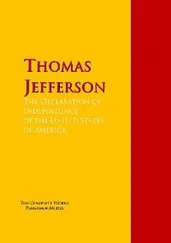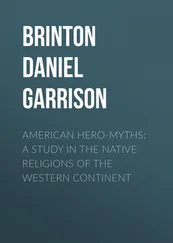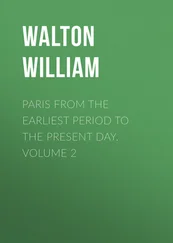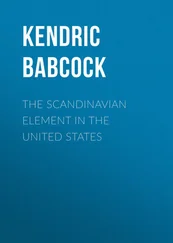Hubert Bancroft - The Native Races [of the Pacific states], Volume 5, Primitive History
Здесь есть возможность читать онлайн «Hubert Bancroft - The Native Races [of the Pacific states], Volume 5, Primitive History» — ознакомительный отрывок электронной книги совершенно бесплатно, а после прочтения отрывка купить полную версию. В некоторых случаях можно слушать аудио, скачать через торрент в формате fb2 и присутствует краткое содержание. Жанр: foreign_antique, foreign_prose, на английском языке. Описание произведения, (предисловие) а так же отзывы посетителей доступны на портале библиотеки ЛибКат.
- Название:The Native Races [of the Pacific states], Volume 5, Primitive History
- Автор:
- Жанр:
- Год:неизвестен
- ISBN:нет данных
- Рейтинг книги:5 / 5. Голосов: 1
-
Избранное:Добавить в избранное
- Отзывы:
-
Ваша оценка:
- 100
- 1
- 2
- 3
- 4
- 5
The Native Races [of the Pacific states], Volume 5, Primitive History: краткое содержание, описание и аннотация
Предлагаем к чтению аннотацию, описание, краткое содержание или предисловие (зависит от того, что написал сам автор книги «The Native Races [of the Pacific states], Volume 5, Primitive History»). Если вы не нашли необходимую информацию о книге — напишите в комментариях, мы постараемся отыскать её.
The Native Races [of the Pacific states], Volume 5, Primitive History — читать онлайн ознакомительный отрывок
Ниже представлен текст книги, разбитый по страницам. Система сохранения места последней прочитанной страницы, позволяет с удобством читать онлайн бесплатно книгу «The Native Races [of the Pacific states], Volume 5, Primitive History», без необходимости каждый раз заново искать на чём Вы остановились. Поставьте закладку, и сможете в любой момент перейти на страницу, на которой закончили чтение.
Интервал:
Закладка:
126
Stephens' Cent. Amer. , vol. ii., p. 439.
127
Antiq. Amer. , p. 56.
128
Humboldt reviews the points of resemblance and comes to the conclusion that they afford no foundation upon which to base a theory of Egyptian origin. Vues , tom. i., pp. 120-4. 'There is much in the shape, proportions and sculptures of this pyramid (Xochicalco) to connect its architects with the Egyptians.' Mayer's Mex. as it Was , p. 186. Bradford finds that some 'of the Egyptian pyramids, and those which with some reason it has been supposed are the most ancient, are precisely similar to the Mexican Teocalli.' But he only sees Egyptian traces in this; he shows that similar pyramidal structures have been found in very many parts of the world; and he believes the Americans to have originated from many sources and stocks. See Amer. Antiq. , p. 423.
129
See vol. iv., chap. v., vii., and x. Quoting from Molina, Hist. Chili , tom. i., notes, p. 169, M'Culloh writes: 'Between the hills of Mendoza and La Punta, upon a low range of hills, is a pillar of stone one hundred and fifty feet high, and twelve in diameter.' 'This,' he adds, 'very much reminds us of the pillar and obelisks of ancient Egypt.' Researches , pp. 171-2. Jones, Hist. Anc. Amer. , pp. 122-3, is very confident about the obelisk. He asks: 'What are the Obelisks of Egypt? Are they not square columns for the facility of Sculpture? And of what form are the isolated columns at Copan? Are they not square, and for the same purpose of facility in Sculpture with which they are covered, and with workmanship "as fine as that of Egypt?"… The columns of Copan stand detached and solitary, – the Obelisks of Egypt do the same, and both are square (or four-sided) and covered with the art of the Sculptor. The analogy of being derived from the Nile is perfect, – for in what other Ruins but those of Egypt, and Ancient America, is the square sculptured Column to be found?'
130
Essai Pol. , tom. i., p. 265. Notwithstanding certain points of resemblance, says Prescott, 'the Palenque architecture has little to remind us of the Egyptian, or of the Oriental. It is, indeed, more conformable, in the perpendicular elevation of the walls, the moderate size of the stones, and the general arrangement of the posts, to the European. It must be admitted, however, to have a character of originality peculiar to itself.' Mex. , vol. iii., pp. 407-8.
131
There is a plate showing an Aztec priestess in Delafield's Antiq. Amer. , p. 61, which, if correctly drawn, certainly presents a head-dress strikingly Egyptian. The same might almost be said of a cut in vol. iv. of this work, p. 562 , and, indeed, of several other cuts in the same volume. Mr Stephens, Cent. Amer. , vol. ii., p. 441, gives, for the sake of comparison, a plate representing two specimens of Egyptian sculpture; one from the side of the great monument at Thebes known as the Vocal Memnon, and the other from the top of the fallen obelisk at Carnac. 'I think,', he writes, 'by comparison with the engravings before presented, it will be found that there is no resemblance whatever. If there be any at all striking, it is only that the figures are in profile, and this is equally true of all good sculpture in bas-relief.' He happens, however, here, to have selected two Egyptian subjects which almost find their counterparts in America. In the preceding volume of this work, p. 333 , is given a cut of what is called the 'tablet of the cross' at Palenque. In this we see a cross, and perched upon it a bird, to which (or to the cross) two human figures in profile, apparently priests, are making an offering. In Mr Stephens' representation from the Vocal Memnon we find almost the same thing, the differences being, that instead of an ornamented Latin cross, we have here a crux commissa , or patibulata ; that instead of one bird there are two, not on the cross but immediately above it; and that the figures, though in profile and holding the same general positions, are dressed in a different manner, and are apparently binding the cross with the lotus instead of making an offering to it; in Mr Stephens' representation from the obelisk of Carnac, however, a priest is evidently making an offering to a large bird perched upon an altar, and here, again, the human figures occupy the same position. The hieroglyphs, though the characters are of course different, are, it will be noticed, disposed upon the stone in much the same manner. The frontispiece of Stephens' Cent. Amer. , vol. ii., described on p. 352, represents the tablet on the back wall of the altar, casa No. 3, at Palenque. Once more here are two priests clad in all the elaborate insignia of their office, standing one on either side of a table, or altar, upon which are erected two batons, crossed in such a manner as to form a crux decussata , and supporting a hideous mask. To this emblem they are each making an offering.
132
Delafield, it is true, discerns a distinct analogy between the hieroglyphs of Egypt and America. And the evidence he adduces is absurd enough. 'Hieroglyphic writings,' he says, 'are necessarily of three kinds, viz: phonetic, figurative, and symbolical.' He then goes on to show at great length, that both in Egypt and in America all three of these systems were used: hence, the resemblance. Antiq. Amer. , pp. 42-7. 'Les monumens du Palenque présentent des inscriptions hiéroglyphiques qui ne paraissent pas différer des hiéroglyphes de l'ancienne Thèbes.' Giordan , Tehuantepec , p. 57. Jomard pronounces an inscription found at Grave Creek to be Lybian. Domenech's Deserts , vol. i., pp. 411-12. Says M'Culloh: 'The Game of the Flyers , we notice in this place, as M. Denon in the plates to his Travels in Egypt, has given the copy of some figures taken from the Egyptian hieroglyphics, which have every appearance of a similar design with this Mexican amusement or ceremony. – The similarity of device will be best seen, by comparing the plate given by Clavigero, with the (lxiii. plate) of Denon's Atlas, &c.' Researches on Amer. , pp. 170-1. Priest, Amer. Antiq. , p. 122, gives a comparative table of Lybian characters, and others, which he affirms to have been found at Otolum, or Palenque: the whole statement is, however, too apocryphal to be worthy of further notice. See, also, a long letter from Prof. Rafinesque to Champollion, 'on the Graphic Systems of America, and the Glyphs of Otolum, or Palenque, in Central America,' in Id. , pp. 123-9. The hieroglyphics of Palenque and Tula encourage the idea that they were founded by an Egyptian colony. Juarros , Hist. Guat. , p. 19.
133
In a letter by Jomard, quoted by Delafield, we read: 'I have also recognized in your memoir on the division of time among the Mexican nations, compared with those of Asia, some very striking analogies between the Toltec characters and institutions observed on the banks of the Nile. Among these analogies there is one which is worthy of attention. It is the use of the vague year of three hundred and sixty-five days, composed of equal months, and of five complementary days, equally employed at Thebes and Mexico, a distance of three thousand leagues. It is true that the Egyptians had no intercalation, while the Mexicans intercalated thirteen days every fifty-two years. Still farther: intercalation was proscribed in Egypt, to such a point that the kings swore, on their accession, never to permit it to be employed during their reign. Notwithstanding this difference, we find a very striking agreement in the length of the duration of the solar year. In reality, the intercalation of the Mexicans being thirteen days on each cycle of fifty-two years, comes to the same thing as that of the Julian calendar, which is one day in four years; and consequently supposes the duration of the year to be three hundred and sixty-five days, six hours. Now such was the length of the year among the Egyptians, since the sothic period was at once one thousand four hundred and sixty solar years, and one thousand four hundred and sixty-one vague years; which was, in some sort, the intercalation of a whole year of three hundred and seventy-five days every one thousand four hundred and sixty years. The property of the sothic period – that of bringing back the seasons and festivals to the same point of the year, after having made them pass successively through every point – is undoubtedly one of the reasons which caused the intercalation to be proscribed, no less than the repugnance of the Egyptians for foreign institutions. Now it is remarkable that the same solar year of three hundred and sixty-five days, six hours, adopted by nations so different, and perhaps still more remote in their state of civilization than in their geographical distance, relates to a real astronomical period, and belongs peculiarly to the Egyptians… The fact of the intercalation (by the Mexicans) of thirteen days every cycle, that is, the use of a year of three hundred and sixty-five days and a quarter, is a proof that it was either borrowed from the Egyptians, or that they had a common origin.' Antiq. Amer. , pp. 52-3. 'On the 26th of February, the Mexican century begins, which was celebrated from the time of Nabonassor, seven hundred and forty-seven years before Christ, because the Egyptian priests conformably to their astronomical observations had fixed the beginning of their month Toth and the commencement of their year at noon on that day; this was verified by the Meridian of Alexandria, which was erected three centuries after that epoch. Hence it has been contended there could exist no doubt of the conformity of the Mexican with the Egyptian calendar, for although the latter assigned twelve months of thirty days each to the year, and added five days besides, in order that the circle of three hundred and sixty-five days should recommence from the same point; yet, notwithstanding the deviation from the Egyptian mode in the division of the months and days, they yet maintained that the Mexican method was conformable thereto, on account of the superadded five days; with this only difference, that upon these the Americans attended to no business, and therefore termed them Nemontemi or useless, whereas the Egyptians celebrated, during that epoch, the festival of the birth of their gods, as attested by Plutarch de Feide, and Osiride. Upon the other hand it is asserted, that though the Mexicans differed from the Egyptians by dividing their year into eighteen months, yet, as they called the month Mextli Moon, they must have formerly adopted the lunar month, agreeable to the Egyptian method of dividing the year into twelve months of thirty days; but to support this assertion no attempt has been made to ascertain the cause why this method was laid aside. The analogy between the Mexican and the Egyptian calendars is thus assumed to be undeniable. Besides what has been here introduced, the same is attempted to be proved in many other works which I pass over to avoid prolixity, and therefore only mention that they may be found in Boturini, in La Idea del Universo, by the abbé don Lorenza de Hervas, published in the Italian language, in Clavigero's dissertations, and in a letter addressed to him by Hervas, which he added to the end of his second volume.' Cabrera , Teatro , in Rio's Description , pp. 103-5. See also: Humboldt , Vues , tom. i., pp. 344, 348; Clavigero , Storia Ant. del Messico , tom. iv., p. 20; Malte-Brun , Précis de la Géog. , tom. vi., p. 295.
Читать дальшеИнтервал:
Закладка:
Похожие книги на «The Native Races [of the Pacific states], Volume 5, Primitive History»
Представляем Вашему вниманию похожие книги на «The Native Races [of the Pacific states], Volume 5, Primitive History» списком для выбора. Мы отобрали схожую по названию и смыслу литературу в надежде предоставить читателям больше вариантов отыскать новые, интересные, ещё непрочитанные произведения.
Обсуждение, отзывы о книге «The Native Races [of the Pacific states], Volume 5, Primitive History» и просто собственные мнения читателей. Оставьте ваши комментарии, напишите, что Вы думаете о произведении, его смысле или главных героях. Укажите что конкретно понравилось, а что нет, и почему Вы так считаете.
![Hubert Bancroft The Native Races [of the Pacific states], Volume 5, Primitive History обложка книги](/books/749157/hubert-bancroft-the-native-races-of-the-pacific-s-cover.webp)









![Hubert Bancroft - The Native Races [of the Pacific states], Volume 1, Wild Tribes](/books/750126/hubert-bancroft-the-native-races-of-the-pacific-s-thumb.webp)

